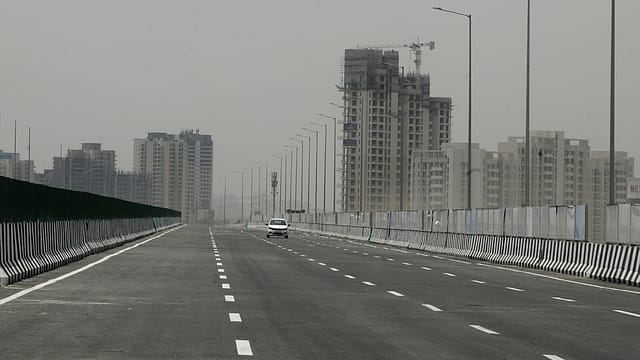From ₹18 cr to ₹250 cr per km: CAG flags high cost of Dwarka Expressway
ADVERTISEMENT

The Comptroller and Auditor General of India (CAG) says the absence of a detailed project report for the construction of Dwarka Expressway led to cost overruns from ₹18.20 crore per kilometre to ₹250.77 crore per km.
Despite sufficient right of way being available with the National Highways Authority of India (NHAI) for constructing all 14 lanes of Dwarka Expressway at grade, for no reasons on record, it was being constructed with eight-lane elevated road and six lanes at grade road, resulting in a very high per km civil cost of ₹250.77 crore, the auditor says in its report.
Dwarka Expressway aims to de-congest NH-48 between Delhi and Gurugram. The 14-lane national highway will run parallel to existing NH-48.
While a 90-metre right of way was handed over by the Haryana Government to NHAI free of cost, the auditor observed that around up to 70-75 metre of right of way was required to build 14 lane national highway at grade.
"However, for no reasons on record, the project highway in the Haryana region, where its length was 19 km, was planned with eight-lane elevated main carriageway and six lanes at grade road when NHAI already had 90 meter right of way and the same was sufficient for building 14 lane at grade national highway," the CAG says.
January 2026
Netflix, which has been in India for a decade, has successfully struck a balance between high-class premium content and pricing that attracts a range of customers. Find out how the U.S. streaming giant evolved in India, plus an exclusive interview with CEO Ted Sarandos. Also read about the Best Investments for 2026, and how rising growth and easing inflation will come in handy for finance minister Nirmala Sitharaman as she prepares Budget 2026.
Due to such massive structures, this project for a length of 29.06 km had sanctioned civil construction cost of ₹7,287.29 crore, or ₹250.77 crore per km, as against per km civil construction cost of ₹18.20 crore approved by Cabinet Committee on Economic Affairs (CCEA), says the auditor.
Construction of underpasses or flyovers at the intersection point of at grade highway could have been considered as a feasible option than constructing the whole of the eight-lane main carriageway as elevated, says the CAG.
"At one location where the main carriageway was at grade, suitable underpass was being constructed to avoid traffic congestion. This could have mitigated the huge cost of building the whole stretch in Haryana region as elevated portion," it says, adding that the highway ministry did not counter the audit observation that 14 lane national highway could have been built at grade with available 90 metre right of way.
"As per feasibility report, average daily traffic of 55,432 passenger vehicles, besides freight vehicles, (2018) was travelling beyond Gurugram for larger distances and this traffic was to be shared between National Highway 48 and the eight lane elevated main carriageway of Dwarka Expressway. There was no justification on record for planning/construction of eight lanes (elevated lanes) for average daily traffic of 55,432 passenger vehicles, besides freight vehicles, whereas only six lanes (at grade lanes) were planned/constructed for average annual daily traffic of 2,32,959 passenger vehicles, besides freight vehicles," the auditor says.
The planned toll rates and tolling mechanism of Dwarka Expressway might hinder the recovery of the capital cost of the project and might also result in undue financial burden on commuters moving between Delhi-Gurugram, claims the CAG.
Due to per km civil cost for Dwarka Expressway coming to ₹250.77 crore and it being structure intensive project, management derived a toll rate of ₹290 per car single trip, as per applicable rules, for recovering such huge capital expenditure over its design life as against ₹60 being charged from a car on the existing toll plaza at Kherki Daula on NH-48.
However, considering the rate to be very high, the Ministry of Road Transport and Highways (MoRTH) approved for tolling of Delhi-Gurugram section of NH-48, after buying back the concession from existing concessionaire of NH-48, and Dwarka Expressway (NH-248BB) as a combined loop through Intelligent Transit System for section actually used by the commuter at the toll rates of existing NH-48. "In this regard, Audit further observed that charging lower rate of toll, as decided by MoRTH, would not be in consonance with National Highway Fee Rules which prescribed higher toll rates for super structures like major and minor bridges as compared to linear road length because of the latter being less capital intensive. Also, charging of toll at low rates would be detrimental to recovery of the huge capital cost of Dwarka Expressway. On the other hand, charging of high toll rates, in order to cover high cost of this project, would again be detrimental to recovery of huge capital cost of the Dwarka Expressway due to diversion of traffic to non-tollable roads lying in its vicinity," the audit reports points out.
